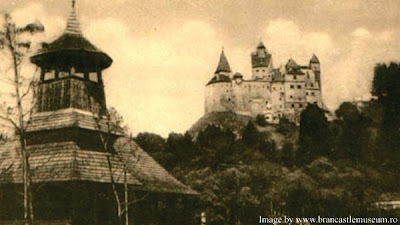Mary King’s Close, Edinburgh, Scotland
For years the hidden underground closes of Mary King’s Close, in the Old Town area of Edinburgh, Scotland, have been shrouded in myths and mysteries. Tales of ghosts and murders, and myths of plague victims being walled up and left to die abounded. [via flushrush]
The Real Mary King’s Close consists of a number of closes which were originally narrow streets with houses on either side, stretching up to seven storeys high. In 1753, the Burgh Council decided to develop a new building on this site, the Royal Exchange (now the City Chambers). The houses at the top of the closes were knocked down and part of the lower sections were kept and used as the foundations for the Royal Exchange. The remnants of the closes were left beneath the building, dark and ancient dwellings steeped in mystery.
Following research into new documentary and archaeological evidence uncovered by Continuum, for the first time the real lives of some of the people who lived here have been traced and their stories can now be told. At The Real Mary King’s Close you will see an historically accurate interpretation of life in Edinburgh from the sixteenth to the nineteenth centuries.
Chernobyl, Pripyat, Ukraine
Prypiat (Ukrainian: При́п’ять, Pryp”jat’; Russian: При́пять, Pripjat’), or Pripyat, is an abandoned city in the zone of alienation in northern Ukraine, Kiev Oblast, near the border with Belarus. The city was founded in 1970 to house the Chernobyl Nuclear Power Plant workers, and was abandoned in 1986 following the Chernobyl disaster. Its population had been around 50,000 prior to the accident.
It is difficult to accurately quantify the number of deaths caused by the events at Chernobyl
The Chernobyl disaster was a nuclear reactor accident at the Chernobyl Nuclear Power Plant in Ukraine, then part of the Soviet Union. It is considered to be the worst nuclear power plant disaster in history and the only level 7 instance on the International Nuclear Event Scale. It resulted in a severe release of radioactivity into the environment following a massive power excursion which destroyed the reactor.
Paris Catacombs, Paris, France
Underground stone quarries that hold the 200-year-old skeletons of several million people.
The Catacombs of Paris or Catacombes de Paris are a famous underground ossuary in Paris, France. Its entrance is located near the Denfert-Rochereau station of the Paris Métro. Organized in a renovated section of the city’s vast network of subterranean tunnels and caverns towards the end of the 18th century, it became a tourist attraction on a small scale from the early 19th century and has been open to the public on a regular basis from 1867. The official name for the catacombs is l’Ossuaire Municipal.

Bones and skulls are stacked on either side of a narrow corridor like merchandise at a warehouse—a lot of merchandise. The air is close and cool, with just a hint of decomposition, and there’s rude graffiti dating from the French Revolution, mainly about the king and the feeble nobility.
Manchac Swamp, Louisiana
The Manchac Swamp, a.k.a. the “haunted swamp,” near New Orleans is a Southern Gothic fan’s dream. An imprisoned voodoo queen is said to have cast a curse on these watery surroundings around the turn of the last century, resulting in the disappearance of three hamlets in a hurricane in 1915.
This swamp is a wilderness jewel. Sims’s photographs and John Kemp’s text have made timeless the people and place of Manchac Swamp.
The Manchac Swamp Bridge is a bridge in the US state of Louisiana. With a total length of 22.80 miles (36.69 km) it is the third longest bridge in the world by total length (see List of bridges by length). The bridge carries Interstate 55 over the Manchac Swamp in Louisiana, and represents one-third of the highway’s approximately 66 miles in Louisiana.
Bran Castle, Bran, Romania
Bran Castle situated near Bran and in the immediate vicinity of Braşov, is a national monument and landmark in Romania. The fortress is situated on the border between Transylvania and Wallachia, on DN73. Commonly known as “Dracula’s Castle” (although it is one among several locations linked to the Dracula legend, including Poienari Castle and Hunyad Castle), it is marketed as the home of the titular character in Bram Stoker’s Dracula.
In 1897 Bram Stoker wrote a terrifying story about Count Dracula. A century after, there are still people who believe in it. Even researchers are trying to find out the truth about Dracula. All are trying to clear the mystery: was there or wasn’t there a vampire in Transylvania?How many of these fabulous stories are legends and how many say the truth ? Here is the legend about Dracula.
His castle is supposed to be Bran’s Castle since its narrow corridors constitute a mysterious labyrinth of ghostly nooks and secret chambers easy to hide a “vampire”.
Did you like this post? Leave your comments below!Found this Post interesting? Receive new posts via RSS (What is RSS?) or Subscribe to CR by Email












